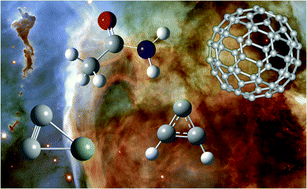Laboratory spectroscopy of astrophysically relevant carbon species
Abstract
Carbon is one of the most common elements in the solar system, with a fractional abundance of 10−4 relative to hydrogen. Thus, it is not surprising that over 100 carbon-bearing species have been definitively detected in the interstellar medium via their rotational, infrared, and/or electronic transitions. In order to identify these species, laboratory spectra are needed for comparison to astronomical data. Challenges arise when obtaining laboratory spectra due to the instability of many of these molecules. Over the years, sensitive instrumentation and better techniques for producing these species in situ have been developed to achieve this goal. The use of complementary spectroscopic methods, such as matrix isolation, cavity ringdown, resonance enhanced multiphoton ionization, and ion trapping have led to the identification of several new carbon species at optical and ultraviolet wavelengths. Laboratory spectra have been compared to astronomical data in order to gain further insight into interstellar chemistry. In particular, attempts have been made to identify the carriers of the diffuse interstellar bands, however, with little success. These results are discussed in the following review.


 Please wait while we load your content...
Please wait while we load your content...